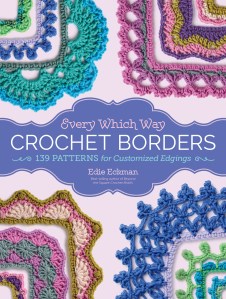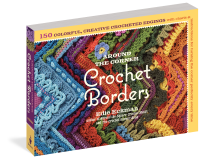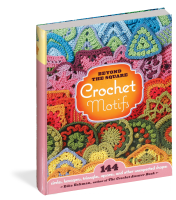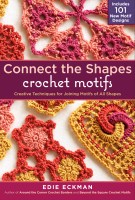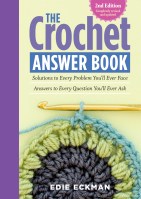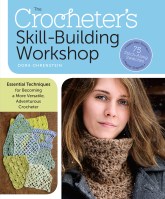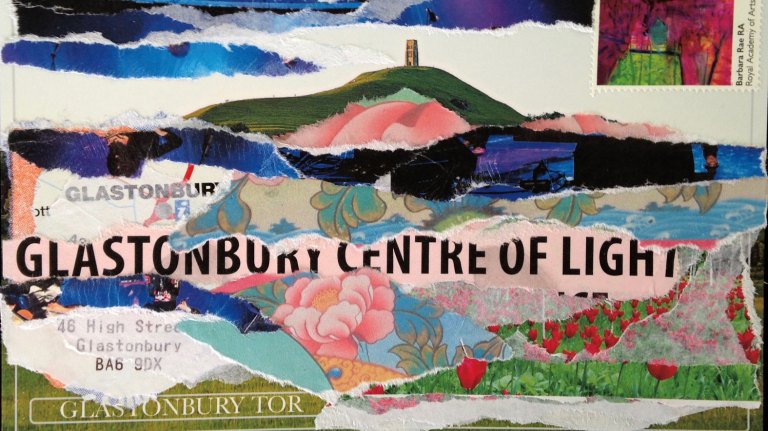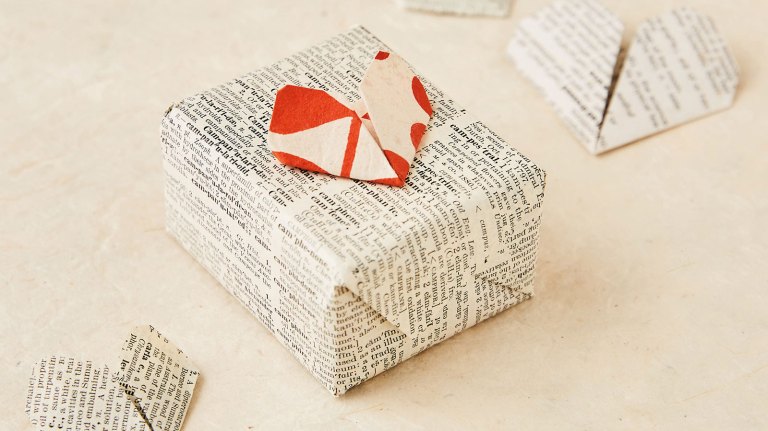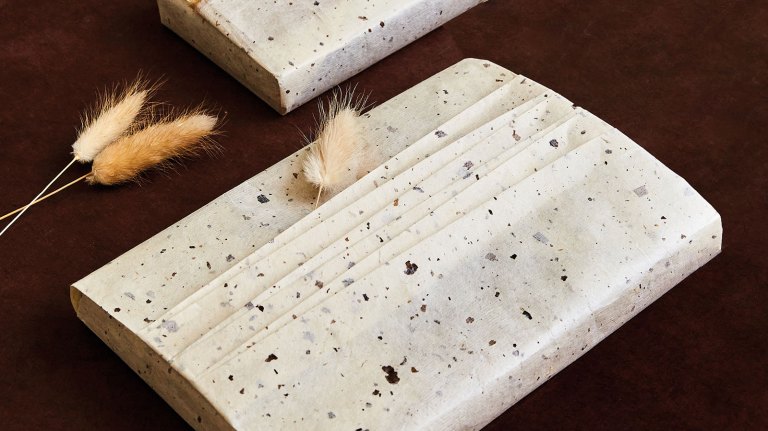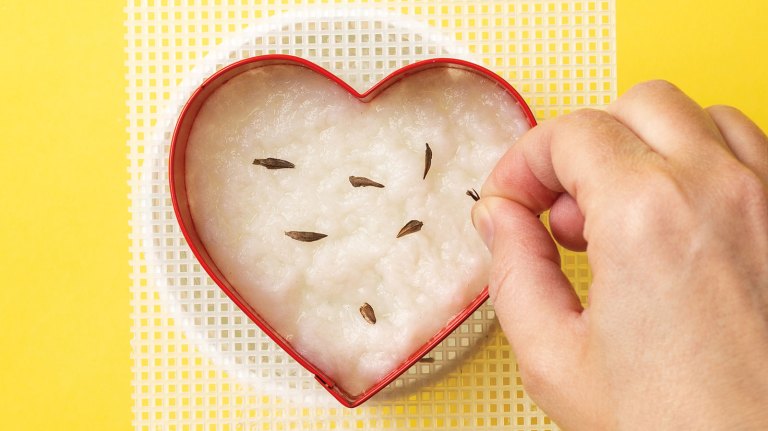How to Choose the Best Crochet Border
When adding that all-important finishing touch to a project, let a few key design principles be your guide.
Crocheted borders work on many types of fabric, including crocheted, knitted, and woven. You can add a crocheted edging to non-woven fabric, such as felt or fleece, and you can make separate borders and sew or glue them onto other types of material.
Choosing a border design may seem overwhelming. After all, there are so many to choose from! Your choice will be determined by the project, your personal taste, and the taste of the person who will be using it. You may just go with your instincts when choosing a border, but if you want a more structured approach, you might keep in mind some of the following principles.
Choices: Form Follows Function
Simple, narrow borders may serve mostly functional tasks: hiding yarn ends, stabilizing edges, and serving as button and buttonhole bands. They may be the best choice to frame a throw or shawl or other item that is particularly busy, multicolored, or highly textured. In other words, for these projects, let the main fabric be the main act and the border be the supporting cast.
More decorative edgings, on the other hand, may be the focal point of a design, or at least may serve to enhance and complement the main fabric. As a matter of fact, some borders are so versatile that they can be used for more than just borders! That fringy, dangly border that might not be the best choice for a much-used child’s blankie might be perfect made into a necklace.
Complement vs. Contrast
Consider choosing a border that picks up some aspect of the main fabric.
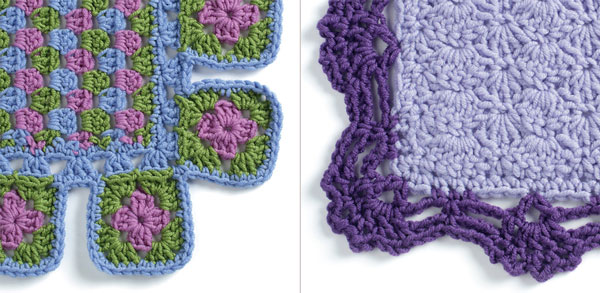
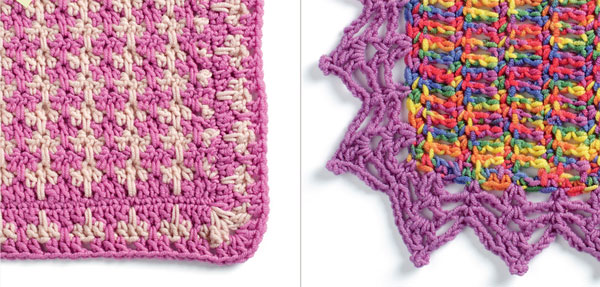
A Matter of Scale
Pay attention to the scale of your border as it relates to whatever you are attaching it to. Avoid overwhelming a tiny project with a too-wide border. (Unless, of course, that’s the look you are going for!)
The Potential in Color
Colors play a very important part in design; a simple change of color can completely change the look of a border. A solid color used throughout can highlight the shape of the overall design, while a multicolor yarn may confuse and muddy that same shape. Using different solid colors in separate rounds can highlight individual stitches or groups of stitches. The order of the colors can matter; two colors may seem to go well in theory, but have unexpectedly unhappy results when placed next to each other. The color of the final round sets the tone of the entire border. You may need to play with color placement to ensure that the final round stands up to its role as both design anchor and focal point. And of course, we all have color preferences. Don’t dismiss a border in the book based on color alone. You might love it in a different color!
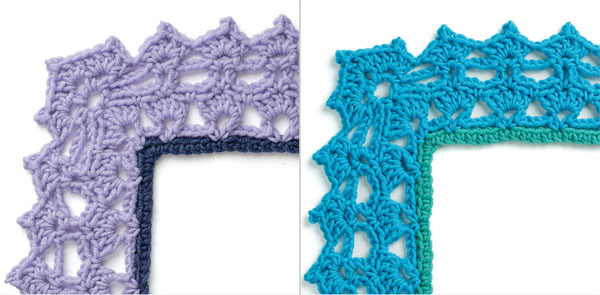
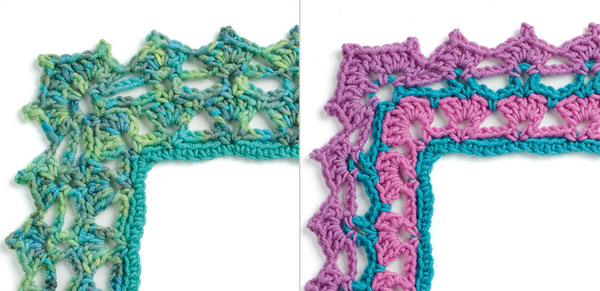
It’s All About the Yarn
Beyond color choice — or perhaps before it — is yarn choice. Different fibers and yarn weights will make the same border look very different. When working on crocheted, knit, or woven fabrics, you will usually be using the same yarn that was used in the main fabric. This ensures that the weight and scale of the yarn works with the design. However, when this is not the case — either because the border is going on a non-yarn background or you are simply changing the yarn — you’ll want to consider the scale of the border yarn and stitches and how they relate to the thing the border is attached to.
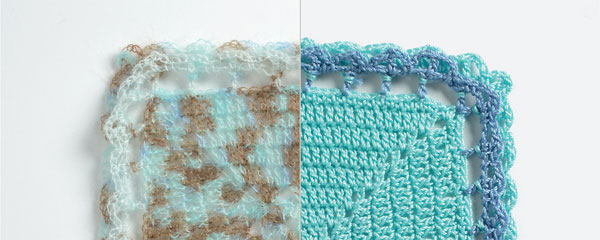
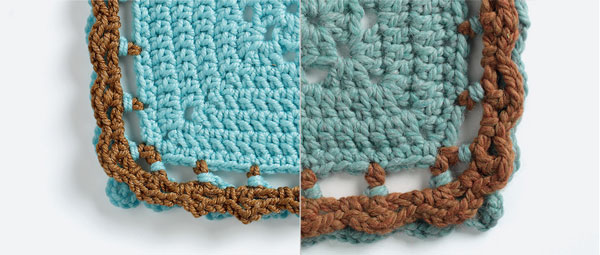
TEXT EXCERPTED FROM EVERY WHICH WAY CROCHET BORDERS © BY EDITH L. ECKMAN.
